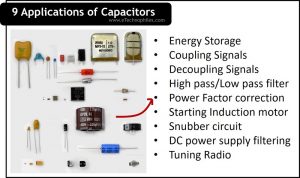Last updated on April 3rd, 2024 at 11:07 am
The capacitor is a device that stores energy in the form of electric field. In this article, we will discuss some of the capacitor’s most interesting uses. It can be used for a variety of purposes, including but not limited to:
Applications
Let’s go through these applications of capacitors one by one.
Energy storage
Energy storage is the main application of a capacitor. The capacitor is first charged fully with a voltage source. It will then hold this charge until it is discharged by a load and thus acting as a temporary battery.

**Image source: https://www.ifixit.com/
For example in backup power supplies or for powering devices that require a quick burst of energy, such as digital cameras.
Coupling capacitor
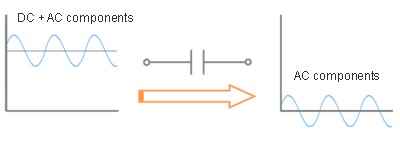
A coupling capacitor connects two circuits together while preventing any DC current from flowing between them. This capacitor allows AC signals to pass while blocking DC signals. Coupling capacitors are often used in audio systems to prevent any DC offset voltage from reaching the speakers.
Decoupling or Bypass capacitor
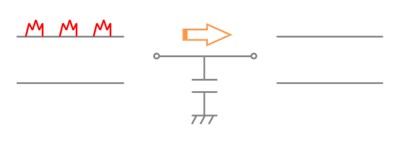
A decoupling capacitor is used to filter out high-frequency noise on a power supply line. By connecting a capacitor across the power supply, any AC noise will be shorted to the ground while the DC signal passes through unaffected. Decoupling capacitors ensure that digital circuits receive a clean and stable power supply.
High pass and Low pass filter
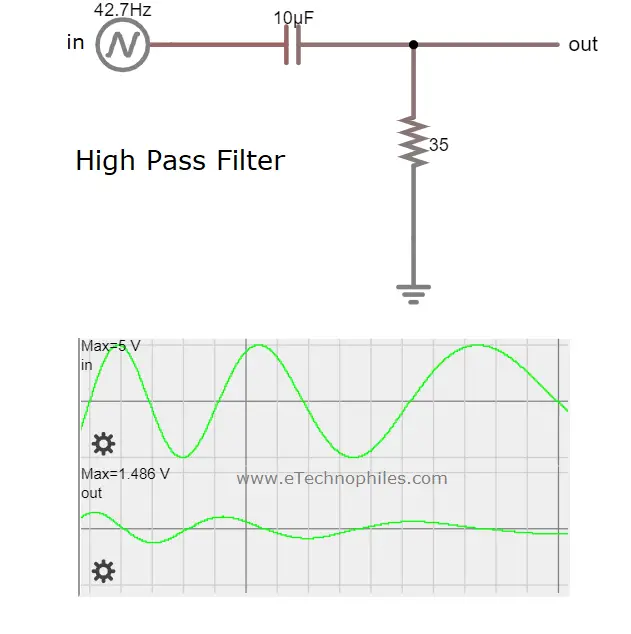
High-pass and low-pass filters are another important application of capacitors. A high pass filter allows high frequencies to pass through while blocking low frequencies. This is done by connecting a capacitor in series with the signal.
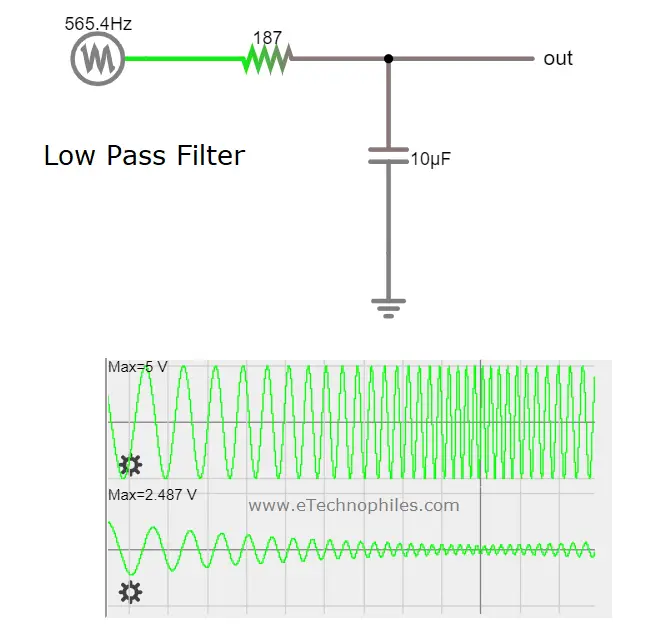
A low pass filter does the opposite, allowing low frequencies to pass through while blocking high frequencies. This is done by connecting a capacitor in parallel with the signal.
Power factor correction
In industries and substations, the AC supply power factor is improved by using capacitors.
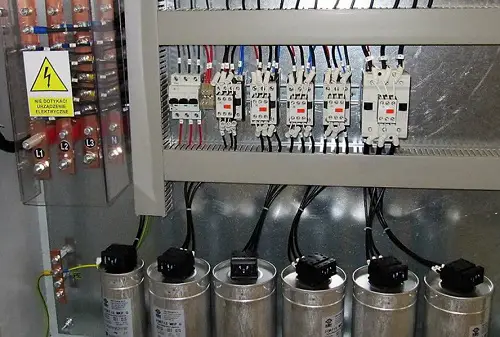
**Image source: www.cornerstonemiddleeast.com
Capacitors do this by providing a leading reactive current to cancel out the inductive lagging current of the system it is connected to. This results in the capacitive current being in phase with the voltage, thus improving the overall power factor. This reduces losses in the system and improves overall efficiency.
When used in this way, capacitors collectively are sometimes referred to as “capacitor banks“.
Starting capacitor
The capacitor used to start single-phase induction motors is called a starting capacitor. When a capacitor is connected in series with the start winding of a single-phase motor, it creates a phase shift between the current in the start winding and the main winding. This phase shift causes the motor to rotate in the desired direction.
The capacitor remains in the circuit only long enough to get the motor up to speed; once the motor is running, the capacitor can be disconnected from the circuit without affecting the operation of the motor.
DC power supply filtering
Capacitors are used to filter out noise from a DC power supply. By connecting a capacitor across the DC power supply, high-frequency noise will be shorted to the ground while the DC signal passes through unaffected.
Snubber capacitor
When a circuit with an inductor connected is abruptly opened, the current passing through the coil diminishes quickly. This sudden action produces a large voltage across the now-open switch or relay.

If the size of the inductor is great enough, this energy spark will cause the contact points to oxidize and diminish performance, weld together, or destroy the switch. In order to protect the switch and the rest of the circuit from such high voltage spikes, a capacitor called the snubber capacitor is connected in series with a resistor across the switch.
Tuning capacitor
In a radio, variable capacitors are used to tune the radio to the desired frequency. By connecting a capacitor in parallel with an inductor, it is possible to create a tuned circuit. This tuned circuit can select a specific frequency from a range of frequencies by adjusting the knob until the radio receives the desired station.
This knob is actually connected to the variable capacitor inside the radio.
